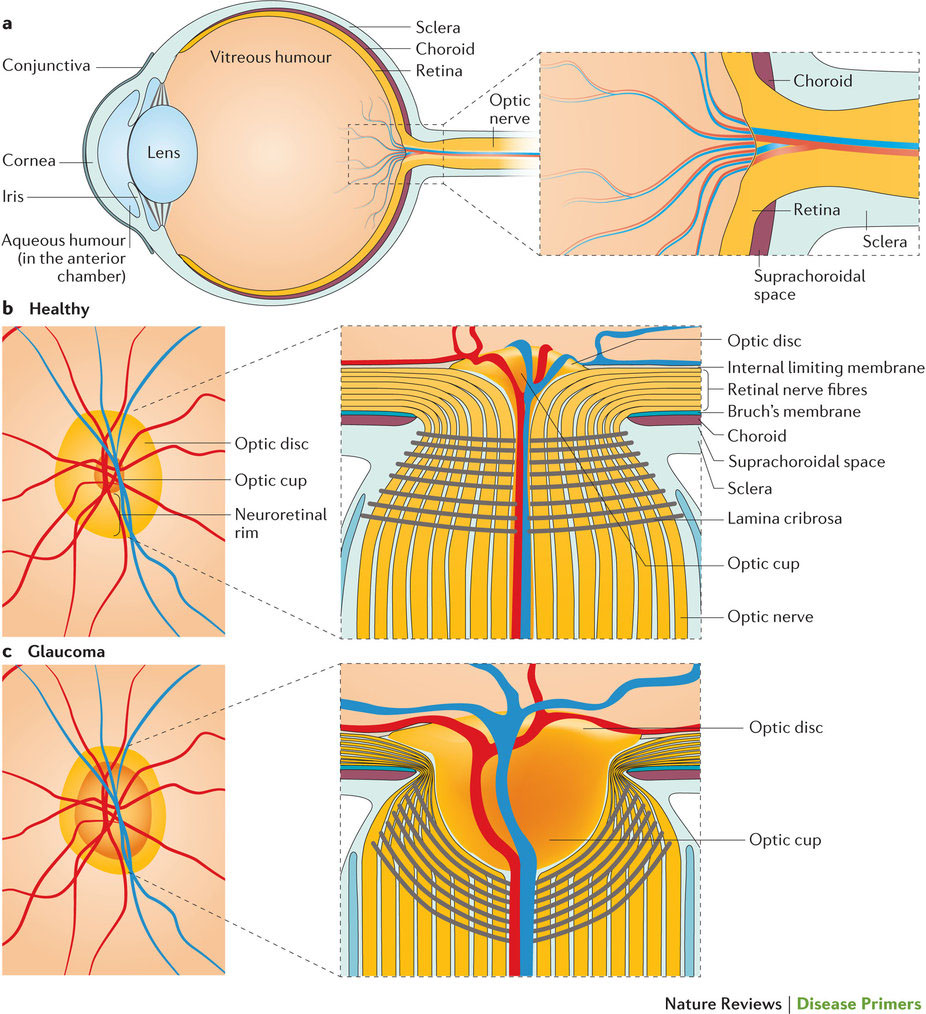Review Abstract
原発開放隅角緑内障
Primary open-angle glaucoma
2016年9月22日 Nature Reviews Disease Primers Article number: 16067 (2016) doi: 10.1038/nrdp.2016.67

緑内障は視神経の進行性変性を特徴とする視神経症であり、視力障害の原因になる。緑内障は世界の不可逆的失明の主要な原因であるが、通常、極めて重症になるまで無症候性のままである。米国や西欧での症例のほとんどは開放隅角緑内障であり、中でも原発開放隅角緑内障(POAG)が最もよく見られる病型である。対照的に、中国などのアジア諸国では、閉塞隅角緑内障の罹患率の方が高い。これら2種の緑内障では、眼房水流出路の解剖学的な構造の特徴が異なっている。POAGの病態生理はまだ明らかになっていないが、視神経乳頭の眼圧(IOP)関連損傷と、その結果生じる網膜神経節細胞(RGC)の消失に関連する視神経症と考えられている。POAGは、眼底検査や視野計による視野検査などの眼の定期検査で診断されることが多い。眼圧計によるIOPの上昇は診断の必須条件ではない。POAGの管理では、IOPを低下させる局所的薬物療法や外科手術が行われるが、RGCの神経保護や軸索再生を標的とした新しい治療法が開発中である。
PrimeView
このPrimeViewでは、視神経乳頭の変形と視力障害を特徴とする原発開放隅角緑内障の発症機構について取りまとめる。
本Primerの図解サマリー
Glaucoma is an optic neuropathy that is characterized by the progressive degeneration of the optic nerve, leading to visual impairment. Glaucoma is the main cause of irreversible blindness worldwide, but typically remains asymptomatic until very severe. Open-angle glaucoma comprises the majority of cases in the United States and western Europe, of which, primary open-angle glaucoma (POAG) is the most common type. By contrast, in China and other Asian countries, angle-closure glaucoma is highly prevalent. These two types of glaucoma are characterized based on the anatomic configuration of the aqueous humour outflow pathway. The pathophysiology of POAG is not well understood, but it is an optic neuropathy that is thought to be associated with intraocular pressure (IOP)-related damage to the optic nerve head and resultant loss of retinal ganglion cells (RGCs). POAG is generally diagnosed during routine eye examination, which includes fundoscopic evaluation and visual field assessment (using perimetry). An increase in IOP, measured by tonometry, is not essential for diagnosis. Management of POAG includes topical drug therapies and surgery to reduce IOP, although new therapies targeting neuroprotection of RGCs and axonal regeneration are under development.

